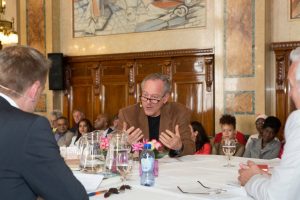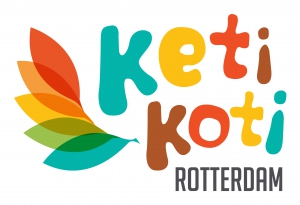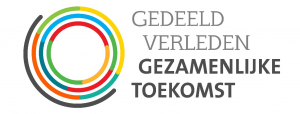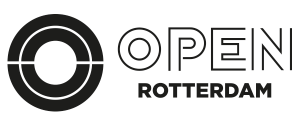Keti Koti Rondetafelgesprek 2013 Deel 2: Richard Price
Keti Koti Rondetafelgesprek 2013
(Her)denk mee, het is onze geschiedenis en onze toekomst
Rotterdam 26 juni 2013
Met: Ahmed Aboutaleb, Teana Boston-Mammah, Francio Guadeloupe, Richard Price, Alex van Stipriaan,
Gespreksleider: Oosterhoff Oosterhoff
Eindredactie: Alina Cuartas de Marchena en Wim Reijnierse
Uitgave: Stichting Gedeeld Verleden Gezamenlijke Toekomst, 2014
Deel 2: Richard Price
Onze volgende gast is net gearriveerd uit Parijs, hij is Richard Price, Amerikaans antropoloog en historicus, vooral bekend om zijn studies over het Caribisch gebied. Hij heeft vele boeken geschreven over de Saamakas in Suriname.
Oosterhoff: You have spent since the sixties a lot of time with the Saamakas in Suriname and French Guyana. You have written many books and articles about them and their culture. Can you explain to us the secret of your relationship with them?
Price: I think you should ask the Saamakas that question. My own brief answer would be: “Lespeki”, respect and a lot of patience, and allowing the time to build a relationship and a friendship over a half a century going on till today. But mainly respect, the willingness to learn. My willingness to learn from them, which still continues. My greatest professors are Saamakas, not all of them, but some Saamakas.
Oosterhoff: like Stipriaan told us, to have interest in the other person, to listen, to make it personal, that is the secret to a good relationship.
Price: It’s not a secret.
Oosterhoff: Can you tell us why you decided to share your life with the Saamakas in Suriname. What was the reason?
Price: The reason at the beginning was academic. I was interested in the African diaspora, what happened to those enslaved Africans brought to the Americas, from Canada down to the tip of South America. In thinking where to go, because anthropologists in those days went “somewhere else” for a couple of years, we (Sally and me) thought that the Maroons in Suriname (Saamakas and others) had the chance and had taken the chance, first to rebel, then to create a new society, to build new languages, religions, ways of life relatively independent from their Dutch masters. In some ways they represent an extreme among the developing Afro-American societies and cultures. They seem to be those that had the most freedom. They took that freedom and they are very proud of that. That is why, the emancipation from slavery or Keti Koti means so little to them. They took that freedom themselves,one-hundred years before the Dutch emancipated the rest of the African slaves.
Oosterhoff: about the commemorating. Can you compare in an international perspective the way the Dutch commemorate the abolition of slavery with the way other countries do, in Europe, USA and the Caribbean and Latin America.
Price: That is a very large question. I want to stress that slavery didn’t end a long, long time ago, it was only yesterday. I have met Americans whose parents were slaves before 1862. I want to read to you a short transcript of what an older black professor said on the radio not so long ago.
“My name is Tonia Stewart. When I was a little girl, about 5 or 6 six years old, I used to sit on the porch in the Mississippi Delta. I listened to my Papa Dallas. He was blind and he had these ugly scars around his eyes. So one day I asked him about those eyes. “Well daughter, when I was young, about your age, I used to sit under the big oak tree and tried to learn my alphabet so that I could read my Bible. But one day the overseer caught me and took me out to the plantation and he called out for all the fieldhands. And he told them: Let this be a lesson to all you darkies, you ain’t got the right to learn to read. And then, daughter, he whipped me and whipped me and if that wasn’t enough he turned around and burned my eyes out.’ At that moment I began to cry, the tears pouring out of my eyes. But then he cautioned me: Don’t you cry for me, daughter, but promise that you will pick up every book you can and read it cover to cover. You see, daughter, today nobody is going to whip you or burn your eyes out because you want to read. Promise me that you will go to school and go as far as you can in your schooling. I want you to promise me that you will tell all the children my story.”
I think that is the reason we are here today. For many people, for many black people in the Americas, this is the reason why we have to remember. On the other hand there are a large number of black people in the Americas who find slavery so painful that they feel we should not be holding this kind of occassion, that it is something personal to remember but that it is not for the government or municipality to do that. Some black Americans would say it is not for the mayor of Rotterdam to do this at all. It is our history, not your history.
As Alex was saying, there are very divergent opinions. There are other places in the Americas, in the diaspora, like the Dominican Republic or Puerto Rico, where there are a lot of people whom in the USA or the Netherlands would be considered “black” and if they were here they would consider themselves black. But in the Dominican Republic or Puerto Rico they don’t. As a matter of fact until very recently if you were black in the Dominican Republic, your passport would say that either you were an “indio” (an Indian) or “trigueño” (wheat-coloured). You could not say that you were black. After a long struggle, now you finally can have that put in your passport. But for a long time that identity was not permitted because, as in Brazi,l there is a myth of racial democracy. As if racism doesn’t exist. But anyone that knows these countries on a daily level, knows that if you are black you are likely to be poor and less well-educated and that if you are white you have many more privileges. It is a way to mask racism.
So if one were to talk about the different kinds of commemmoration in different parts of the Americas it would be a long and very complicated discussion. But here, today, we should not forget the words of Papa Dallas.
Oosterhoff: I want to turn now to your latest book Rainforest Warriors. In this book you explain the struggle of the Saamaka to take their case to the Interamerican Court for Human Rights and ask for protection of their lands against the gold and timber companies. Can you tell us what this is about and what the situation is now?
Price: the Saamaaka people, around 90.000 people nowadays, whose territory is up the Suriname River from Paramaribo, have had their human rights violated three main times. One was when they were taken from Africa, enslaved and brought to Suriname. The second time was in 1962, when Alcoa, the American Aluminium Company and the Dutch Colonial Government built the Afobaka dam and flooded half the Saamakas’ territory. They flooded out 6000 people and forced them to move, without asking their permission or discussing it with them. And then in the 1990’s the independent government of Suriname (at that time the Venetiaan government, but the same policy has been continued by the Bouterse government) began selling off the interior of Suriname, granting concessions to multinational timber companies for logging and to multinational gold companies for mining, in the territories where the Saamakas and other groups live.
In 1997, a Saamaka woman went into her peanut garden and saw Chinese men on bulldozers driving through her garden, with the Suriname army protecting the Chinese. When the captain of the village went to ask what was going on, he was told that this land now belonged to the Chinese, legally. The Suriname government had sold it to the Chinese. So this is not yours anymore, even though the Saamakas had been living there for 300 years. They were told, “this is now for the Chinese and if you complain you will be put in jail in Paramaribo.”
So the Saamakas organised themselves over a period of years and they seized international human rights laws, and in 2000/2001 they approached the Inter=American Commission of Human Rights in Washinton D.C. to bring a complaint against the government of Suriname. And after 7 years of petitions and complaints against the government of Suriname, the Commission decided the case was important enough to bring to the Inter-American Court of Human Rights, that sits in San Jose, Costa Rica. During this period I helped the Saamakas put together their petitions. The Saamakas had a lawyer but also they organised themselves very well. The leaders of the community travelled all over the region informing the Saamakas about the lawsuit. Eventually the Court called everyone together in Costa Rica There were about a dozen representatives from Suriname, the Attorney General came and other high officials, a number of Suriname lawyers, the Saamakas and their lawyers, the Saamaka Gaama ( the chief of the Saamakas), Mrs. Price was there and the Inter=American Commiission came too. There were 2 days of hearings and after 6 months the Court rendered its judgement, The Saamaka Vonnis of 2007.
What they said was that:
- Suriname had to recognise the Saamaka people as a judicial personality. That is, the Saamakas had a right to sue and the right to own things collectively, they were like a person before the law which was not true in the Suriname constitution. Suriname would have to change its laws to recognize the Saamaka People and this also held for the other Maroons and AmerIndians who live in Suriname.
- They said that the Saamakas owned the land they had lived on for over 300 years. The Saamakas had made a map and the Court said that this map was going to be the official map to describe the Saamaka territory. Then they said that within that territory the Saamakas have the right to decide whether or not they want various government projects to take place. If the government wants to build a mine, or a road, the Saamaka have the right to give their free, prior, and informed consent. But if they say no, the government can not carry out the project.. And if they say yes, they have the right to share in the benefits.
- There were a number of other things the Court decided in favor of the Saamaka People. They established a fund of $ 650.000 run by the Saamakas that they could employ for their own communal purposes. I was very honoured that the first thing that the Saamakas decided to do was they asked Sally and me to translate into the Saamaka language a book of mine called “First Time,” which is about the Samaakas’ early history and their struggle against the Dutch and their freedom from the Dutch in 1762, one hundred years earlier than the rest of the Suriname slaves were freed.. This book will come out in September 2013 and is called “Fesiten”. The Saamakas have agreed to buy 3000 copies to give to all the schoolchildren in Saamaka land so that their early history is never forgotten, so that their ancestors’ slavery will not be forgotten and their heroic victories in the wars will not be forgotten.
Oosterhoff: Thank you Mr. Price. Mr Price heeft menige boeken geschreven waarvan een aantal ook vertaald is in het Nederlands.







